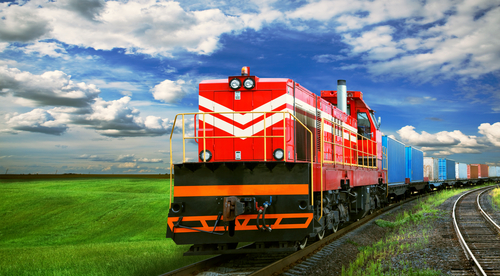While the COVID-19 pandemic has significantly impacted nearly every industry, intermodal appears to be bouncing back sooner than expected.
The pandemic “has had as large of an effect as the Great Recession,” as stated by Jason H. Seidl, Managing Director of Cowen and Company and Railway Age Wall Street Contributing Editor. Although the virus contributed to a “choppy, unpredictable first half to the year,” hope could be on the horizon for the sector.
According to the Association of American Railroads (AAR), U.S. rail traffic volumes could be returning to pre-COVID-19 levels in the near future. Said AAR Senior Vice President John T. Gray, “Coal and other energy-related rail commodities continue to struggle more than most, while intermodal is closer than any other rail traffic category to pre-pandemic levels.”
This August was the fifth best month ever for intermodal, and the best month for intermodal loadings since October 2018. While total carloads for the week ending August 29 down 15.9% compared with the same week in 2019, totaling 225,703 carloads, U.S. weekly intermodal volume was up 3.4% compared to last year, totaling 282,604 containers and trailers.
In August 2020, the AAR found that two carload commodity categories saw carload gains compared with August 2019: grain, up 4,683 carloads or 5.6%, and farm products (excluding grain), up 168 carloads or 5%.
Commodities that saw declines in August 2020 from August 2019 were coal (down 85,216 carloads or 25.8%), crushed stone, sand & gravel (down 24,961 carloads or 25%), and petroleum & petroleum products (down 7,128 carloads or 14.3%).
The sector’s accelerated recovery is likely due the importance of railroads in moving consumer goods, Gray pointed out.
“Despite the pandemic and the associated economic dislocations, an enormous amount of freight continues to move on railroads and other transportation modes,” said Gray. Much of what’s inside the trailers and containers on an intermodal train ends up on the shelves of stores, or finds its way to consumers’ doors via e-commerce merchants. Railroads help ensure that consumers get what they want, when they want it.”
Gray also emphasized that the industry’s return to pre-COVID-19 levels won’t happen overnight, but will be gradual: “Rail traffic, like the overall economy, is generally trending in the right direction, but progress is slow; there’s a long way to go before it’s back to normal; and both week-to-week improvements and setbacks in individual commodities are to be expected.”
As reported by the AAR, combined U.S. carload and intermodal originations this August were 2,021,181, down 5.8%, or 123,682 carloads and intermodal units from August 2019. Total combined U.S. traffic for the first 35 weeks of this year was 16,058,734 carloads and intermodal units, a decrease of 11.8% compared to the previous year.


